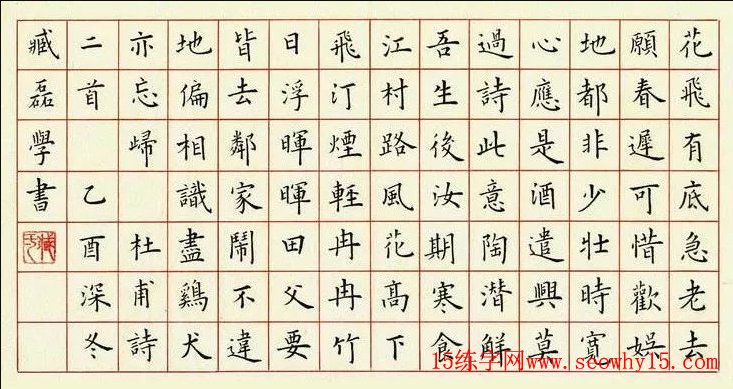I saw on the calligraphy and painting Q&A website that people asked what is hard-pen calligraphy?
In fact, hard-pen calligraphy is a bright and wonderful flower in the garden of calligraphy art. Its writing tools include pens, ballpoint pens, dip pens, pencils, plastic tip pens, bamboo pens, wooden pens, stylus pens, etc., using ink as the main carrier to express Chinese character writing skills. It has the characteristics of easy carrying, fast writing, and wide use value. The difference between it and the brush is that the thick stipples of the soft brush are transformed into fine stipples, and the flesh and sinews are removed to preserve the bones.
Regarding the origin of hard-pen calligraphy, many people believe that it can be traced back to ancient times when people used stone flakes and knives to carve turtle shells and animal bones, and this proves that hard-pen calligraphy is an art form that preceded brush calligraphy. But after all, knives and stone flakes are far from the hard-pen writing tools we use now. There are still certain differences between carving and writing. This is why calligraphy and seal cutting are always two arts, although they are inextricably linked. In comparison, I prefer to trace the history of seal cutting back to the oracle bone era.

Features of hard-pen calligraphy:
1. It has the characteristics of fast writing and wide use value. The difference between it and the brush is that the thick stipples of the soft brush are transformed into fine stipples, and the flesh and sinews are removed to preserve the bones.
2. Due to the material of the pen, hard pens are easier to control than brush pens.
3. Generally used hard pens are mainly fountain pens, ballpoint pens, pencils, etc., so the lines are much finer than those of a brush, so the fonts are much smaller, even smaller than the small letters of a brush.
Hard-pen calligraphy is more practical than writing brushes and is beneficial to work, life, and self-cultivation. Especially in the era of keyboards, anyone who can write beautiful hard-pen calligraphy will be envied by others. If you can write a love letter to your beloved girl with beautiful handwriting, it will be better. Come on?
But if you want to turn hard-ink characters into calligraphy, you must meet the requirements of calligraphy. When it comes to practicing hard-pen calligraphy, there are all kinds of weird things. Let’s not talk about learning modern people’s pen calligraphy. There are even people who copy block letters, Song fonts and even bold fonts. Not all hard-pen calligraphy learning is called learning calligraphy.
Suggestions for practicing hard-pen calligraphy:
1. Priority will be given to ancient posts when selecting posts. If you are interested in practicing regular script, you may consider copying the "Ling Fei Jing". If you are interested in practicing running script, for beginners, it is more recommended to use running script with clear strokes and strict rules. So in terms of running script, my recommendation is "Wen Fu" by Lu Jianzhi.
2. Put an end to "character molding". The so-called character molding is to use hard pen to write in the groove. This is a low-level method that treats the symptoms but not the root cause, and even has many hidden dangers.
3. “Copying” is not recommended.
It is not recommended to use transparent paper to copy hard-pen calligraphy (brush calligraphy is fine). Hard-pen calligraphy pays more attention to structure than brush calligraphy, and tracing is more of a brush calligraphy practice. The tracing effect of hard-pen calligraphy is very little.
4. It is advisable to use the rice-character grid to face the copybook.
Try to make the position and size of each stroke consistent, practice each word hundreds of times, finish writing a copybook, and then continue from the beginning, and so on until you can write each word very similar without looking at the copybook. It worked.
5. Practicing more is not as good as practicing well.
Don't rush to practice all the words at once. If A and B practice calligraphy at the same time, A's ability to write 100 characters will be much better than B's ability to master 1,000 words. Even if A has 900 words that he has not mastered, his writing will still be better than B's.
6. The choice of tools is very important.
Pencils are very expressive in stroke thickness, a useful tool for beginners, and toys for experts; ballpoint pens are not easy to use, so throw them away decisively; fountain pens are the king of hard-pen calligraphy, pick a good one, get familiar with it, and integrate it; gel pens , the most cost-effective, easy to master, highly expressive, and ready to use.
7. Don’t rely too much on calligraphy teachers and tutorials, and don’t worry about your limited talent. The important thing is to practice more and you will succeed if you persist.








